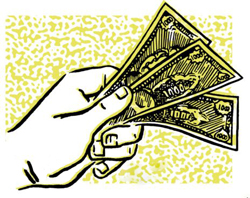 The sales model focuses on needs assessment and solution placement. Buying is a change management activity. They are two different activities, done at two different ? and opposite ? points along the buying decision journey.
The sales model focuses on needs assessment and solution placement. Buying is a change management activity. They are two different activities, done at two different ? and opposite ? points along the buying decision journey.
Sales?models do not have the capability?to facilitate the buyer?s behind-the-scenes issues and activities to ensure they get the necessary buy-in to bring in an outside solution. But they should, because in the gap between the selling and the buying is where we lose our buyers, and they lose us.
WHEN DOES A BUYER? NEED TO BUY
Just because we perceive a need (And we are right! They do!) doesn?t mean?our prospects ?want it fixed, or fixed by us, or fixed now. We enter our conversations with a bias: we believe that our solution will rule the day:?find the need, pitch the solution. Bingo. Except then we sit and wait. And wait.
But the last thing a buyer needs is a solution. In fact, buyers don?t want to buy anything ? they merely need to resolve a business problem. If they are not able to resolve it with a familiar resource, they are forced to select a solution to purchase. But they don?t really want to.
When we enter with a solution ? even one that is?necessary ? buyers have a problem: how do they solve?their problem in the easiest, most cost-effective manner??It?s simpler to use an existing resource so less change is necessary. But?if they determine they must find a new provider, they must bring in the new solution?in a way that leaves their culture whole.?All things being equal they really don?t want to disrupt their routines.
BUYERS LIVE IN SYSTEMS
There is a disparity between the selling model and buying behaviors: solutions are ?things? and a buying decision is a change management issue. As per my latest book Dirty Little Secrets, buyers (like all of us) live in systems of people, rules, relationships, history and policies. Any ?problem? becomes part of the system, which develops work-arounds so it can keep on keepin?-on. So?when we gain weight, we buy new clothes rather than change our eating habits, work out more, stop drinking our wine. And?daily, the system wakes up doing the best it can.
When we approach prospects using the sales model (i.e. a search for a match between the need and the solution), we are acting as if the problem?were an isolated event rather than a part of a larger system of people and policies that maintain it. We don?t realize that they have already created a ?good enough??work-around for it.
It is only when ? and if ? the group of folks that touch the problem daily decide that a work-around isn?t good enough?AND they cannot fix it with a familiar resource, that they seek an external fix. Then, regardless of how well we?ve been selling, they have work to do:?1. they have to figure out how to ?go outside? for a solution; 2. they have to figure out how to get internal issues prepared for change.
HAVING A NEED DOESN?T MEAN A NEED FOR A SOLUTION
Our selling doesn?t provide us with another tool kit for change management ? what buyers do when they go off-line to manage their internal politics and relationship issues.
So what?are we supposed to do?
Here are our choices:
- we sit and wait until they figure out how to get everyone together to decide;
- we sit and wait until they get the full Buying Decision Team on board;
- we pitch, send data, nurture, and hope we?ll be top-of-mind when they?ve put all of their ducks in a row;
- we?begin with?a different focus: we?help them navigate through their buying decision path and shorten the sales cycle AND get onto the Buying Decision Team and thwart competitors.
The last option sounds the best, right? And yes, my Buying Facilitation??model is an add-on skill that works with sales to do this.

Given?you work within?a sales system, let me ask you to consider adding Buying Facilitation??skills to the sales skills you use:
How will you know when it?s time to consider adding a new skill to what you?re already doing successfully?
What skills/activities/beliefs?do you want to keep so anything new will not disrupt your normal functioning that you?ve become familiar with? And how would you like something new added in a way that maintains your activities and motivation?
What would you need to know about Buying Facilitation??before you consider an addition, to know if it would work for you? How difficult it would be to learn/add? What the downsides and upsides would be? How your boss/team would react when you begin selling differently?
What would you need to know from me, as the developer/seller, to know if you?d get the support you need to be successful?
It?s not about your solution. To really sell well, you must have 2 skills:?helping buyers?navigate through their back-end?change management issues;?place solutions.
Or just sit and wait for the low hanging fruit to drop. Remember that 80% of your prospects will buy a solution similar to yours within 2 years. They have the need ? they just haven?t figured out how to manage the change. Help them. And close more sales, quicker.
sd
Read sample chapters of Dirty Little Secrets. Or buy the book.
Hear Sharon Drew make cold calls, prospecting calls, and qualifying calls, live.
Learn Buying Facilitation? |?Implement Buying Facilitation? |?License Buying Facilitation?
Source: http://sharondrewmorgen.com/2012/08/a-buying-decision-is-a-change-management-problem/
yelp huntsville al channel 2 news adrienne bailon yelp stock honda classic news channel 5
No comments:
Post a Comment
Note: Only a member of this blog may post a comment.